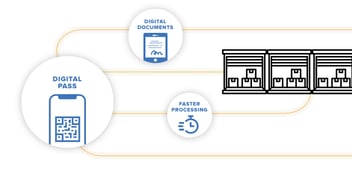Insights
What Leaders Forget about Digital Transformation: Change Management
Some people think digital transformation is nothing more than a series of technology projects. In reality, digital transformation is an organization-wide initiative that relies on top-down change management. Today we explain why change management is so important and how to manage change in your organization.
Digital transformation is the process of using digital technologies to drive change in customer experience, operational processes and business models. Transformation efforts are initiated for several reasons including the need to build operational efficiency, changes in customer demand or because of a merger. Whatever the reason, the process of digital transformation requires coordination across the entire organization and involves significant change, especially in culture.
The success of a transformation effort is directly dependent on how individuals embrace and adopt the associated changes. The better the change management is structured and applied, the higher the probability an organization will meet the intended objectives and achieve the desired value of the investment. Leaders must involve themselves from the very beginning to (1) establish the need for change, (2) communicate their vision, and (3) actively support the transformation.
Why is change management so critical to digital transformation?
Three words explain the importance of change management: resistance to change. Resistance is a factor at every level of an organization and must be addressed top-down, continuously. If you fail to address this resistance, your digital transformation can turn into a years-long nightmare scenario. That could include huge sunk costs in software with low adoption, continued use of inefficient or unsecure technology and many more headaches.
How leaders should manage digital transformation
There are several approaches to change management that are worth looking into, but here we’ll focus on an especially powerful framework from Harvard Business School professor and world-renowned author of Leading Change, John P. Kotter.
Here’s a breakdown of Kotter’s eight keys to success for digital transformation:
-
Establish a sense of urgency: Tell a story that helps stakeholders understand why change is so important. Without their enthusiastic buy-in, your transformation may be doomed from the start.
-
Create a guiding coalition: Pull together a group of leaders who can establish and maintain buy-in throughout your organization. Include executives, operations leaders and dedicated change managers.
-
Create a vision for change: Create a vision that clarifies the direction you want to move in and motivates team members to work together on shared goals.
-
Communicate the vision for change: Continuously promote your vision to foster acceptance among stakeholders. Openly address stakeholder concerns on an ongoing basis.
-
Empower action: Actively support change by (1) eliminating barriers to change, (2) ensuring that workflows, policies and incentives are aligned with your vision and (3) training and rewarding employees appropriately.
-
Generate short-term wins: Maximize stakeholder commitment by delivering business value both quickly and regularly.
-
Consolidate gains: Communicate your successes in order to keep up the momentum for future changes. Don’t declare total ‘victory’. Instead, use quick wins as motivation to drive future success.
-
Anchor the new culture: To sustain long-lasting change, key leaders should continue to oversee change efforts even after the digital transformation is “complete”. Create a transition plan with specific tasks and responsibilities for the maintenance of changes you’ve made.
This is just a quick run-down of Kotter’s framework, but there’s much more to share. For example, it’s important to understand how to periodically adapt your communication plan to maintain urgency and motivation. If you’re wondering how to implement a potential change, schedule a quick chat to discuss how these steps could be applied to your organization.



